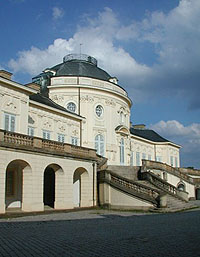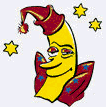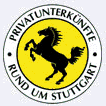
• Stuttgart-West, the largest of the inner city districts created in 1956, has many faces: Karlshöhe, Hasenberg and Kräherwald frame the valley of the West from Vogelsangbach. Even though Middle Stone Age hunters and gatherers left their traces on the Birkenkopf, which today is topped up by 40 meters with the debris of the inner city destroyed in the Second World War, and the Steinenhausenstraße resembles a castle out of the Middle Ages, it was fields, meadows and vineyards which shaped the West. It was only in the beginning of the 19th century that Stuttgart expanded here with industry and residential buildings. Robert Bosch invented his magnetic ignition in a backyard in the West. Firms like Waldbaur (chocolate), Bleyle (clothing), Siegle und Knosp (paint), Pfeiffer (pianos) or Fein (precision engineering) shaped the area, even the jail. Today it is mainly publishing houses such as Klett or Das Beste and insurance companies such as Württembergische, Allianz or Stuttgarter who affect the city district and offer jobs there.
The West until today is one of the most closely populated residential areas in Germany. Despite the losses in the Second World War and thereafter, here the largest connected construction area from foundation times was preserved. Especially in the Johannesstraße with the Johanneskirche at the Feuersee, the confidence of the bourgeoisie from back then is apparent. Behind the many richly decorated storefronts, the standard of living is comfortable in succession to Clara Zetkin, Eduard Mörike or Wilhelm Raabe. A rich offering of shops, a variety of gastronomy and cultural offerings (Theater der Altstadt im Westen, Merlin Kulturzentrum, Bach-Akademie) contribute to the special identity of the West. But Stuttgart-West is also defined by forest. Part of the city district is one of the largest connected forest areas in the city. The royal hunting grounds Rot- und Schwarzwildpark were made accessible to the public after the end of the monarchy and are today a popular and nearby place of relaxation, especially since the Bärenschlössle is managed all year round and there are forest festivals on summer weekends organised by various associations. Schloss Solitude nearby, built by Herzog Carl Eugen von Württemberg, with its luxurious interior houses the Akademie Schloss Solitude as well as the small museum for the artist Fritz von Graevenitz, are part of the many faces of Stuttgart-West. Private Links about Stuttgart-West and photos.







